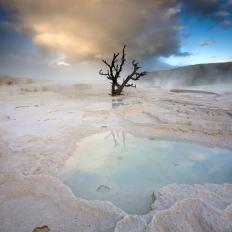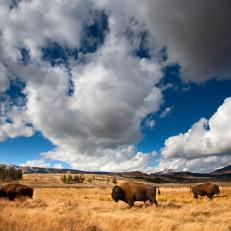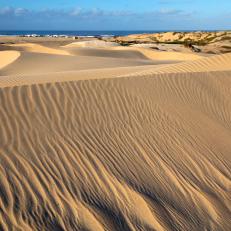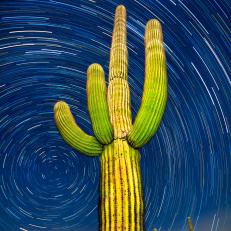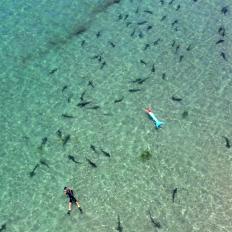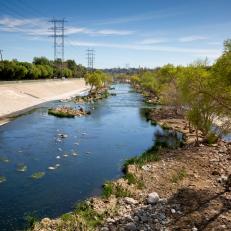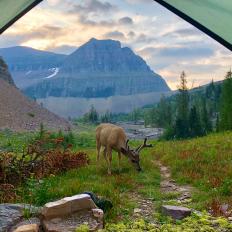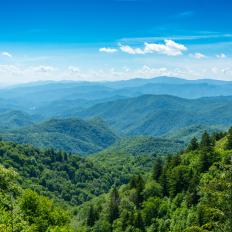Best Nature Photos of 2021
Nature photographer and conservationist, Ian Shive, shares his favorite moments from 2021 on the latest episode of Nature in Focus.
From trekking remote Alaskan wilderness to documenting the birth of cicadas in Virginia, Ian was on the scene with his camera at the ready to capture nature's most incredible moments of the year. Take a look back at Ian's favorite photos and moments of 2021.
January 10, 2022

By:
Ian Shive
Show:
Nature in Focus
Related To:
lessRelated To:
View The Gallery
1 / 26
Wide angle shot of a field of pitcher plants in Big Thicket National Preserve, Texas.
A carnivorous pitcher plant about to lure an unsuspecting victim in Big Thicket National Preserve, Texas.
Dr. Shane Doyle, Apsaálooke and Educational Cultural Consultant, standing just outside the Lamar Buffalo Ranch in Yellowstone National Park.
Grand Prismatic, as seen from the nearby hillside, Yellowstone National Park, Wyoming.
No matter how many times I come back here, I am always mesmerized by the color of the thermal features. Remember to stay on the trail, these can be dangerous, albeit beautiful natural wonders.
The top of the switchbacks! From here the trail snakes behind the mountains you've been looking at for the last couple days and takes you into Sequoia National Park.
Sunrise from trail camp near the base of Mt. Whitney, California.
The second the sun dips behind the mountains, the warm light disappears, and so does the warm weather. Temperatures dropped from the high 50s to below freezing in a matter of hours. This is yet another challenge and reality of mountaineering,. Even in my photos, you can feel the temperature drop by the shift of light from warm and yellow, to cold and blue.
One of the most popular and final stops before the summit push is Trail Camp, at about 12,000 feet in elevation. For those doing the climb over several days (such as us), this is a great place to acclimate to the high altitude and take in the incredible views of Mt. Whitney and the surrounding jagged mountain tops. It's also a good spot to cook some dinner and rest before the final climb to 14,505 feet.
A Northern Raccoon baby is brought into the center, it's eyes barely open. Photographing baby animals can be difficult, as they squirm around quite a bit, so finding a sharp image is challenging.
At first hard to see, this tiny tube must be carefully inserted into the bluebird's mouth to anesthetize it while its wing is repaired during a procedure.
The Ancient Bristlecone Pine Forest, California is in Inyo National Forest, and while we may have been on the hunt to photograph Methusela, we did learn that the discovery of a nearby tree is estimated to be older at 5,060 years old. Its location is even more secret. The rank of "oldest" seems to always be changing as scientists continue their work. Prior to Methusela, there was an older tree named Prometheus (have to love the drama in the naming of these), but it was cut down in 1964 by a student.
Alaska Maritime National Wildlife Refuge, Aleutian Islands, Alaska: A B-24 bomber, which crashed on Atka Island during World War II. This is only one of two B-24 bombers to remain in situ since the war. U.S. Fish & Wildlife Service Refuge Chief Steve Delehanty looks toward the sky and flight path the bomber took.
Alaska Maritime National Wildlife Refuge, Aleutian Islands, Alaska: A B-24 bomber, which crashed on Atka Island during World War II. This is only one of two B-24 bombers to remain in situ since the war.
A somewhat regular sighting at the Santa Barbara Animal Care Network, baby opossums have exceptionally strong hands, which help them latch on to their mothers fur as she moves about.
Returning to this rock once the stars appeared, I was able to make this image. The warm glow on the rock is from the rising moon, which was deep red while low on the horizon.
The ancient bristlecone pine forest looks a bit like a fairytale pine forest, with gnarled, twisted branches reaching every direction. Walking through the forest and knowing that these trees are the oldest living (non-clonal) trees in the world makes a hike into them even more amazing! The most famous and oldest of the bunch is named Methuselah, after the biblical name for the oldest living person, and is estimated to be north of 4,800 years old.
Portrait of an ideal, twisted and tortured specimen of bristlecone pine, Inyo National Forest, White Mountains, California.
End of day light creates a firey glow of this petroglyph in Mojave National Preserve, California.
Exterior of Eagle Cliff Mine in Joshua Tree National Park. This was once a dwelling in the late 1800s, though little information is readily available.
Detail of a Mexican free-tailed bat, which emerges nightly during the mating season from Bracken Cave in Texas.
Alaska Maritime National Wildlife Refuge, Aleutian Islands, Alaska: An unnamed waterfall on Tanaga Island.
The view looking back towards the doorway of the Eagle Cliff Mine. There are many places like this in America's National Parks that are not marked on a map, but with a little extra effort, can reveal the tremendous and fascinating history that is also protected along with the natural features.
The largest gathering of mammals on Earth takes place at Bracken Bat Cave, where 20 million Mexican free-tailed bats emerge at sunset.
A B-24 bomber, which crashed on Atka Island during World War II, is only one of two B-24 bombers to remain in situ since the war. The piece off to the left of the plane is what remains of the tail. The islands are truly like a time capsule, preserving not only wildlife, but also historic remains such as this.
Fireflies illuminate along the famous "Ghost Road" near Big Thicket National Preserve, Texas.










